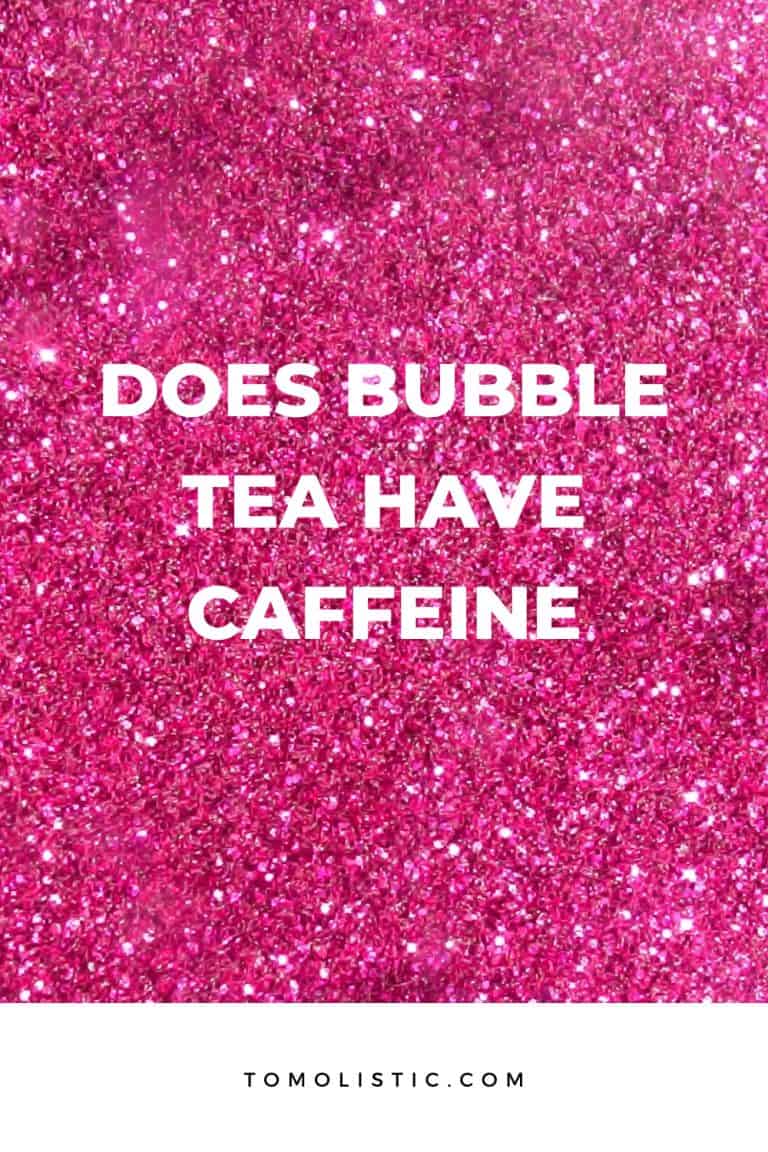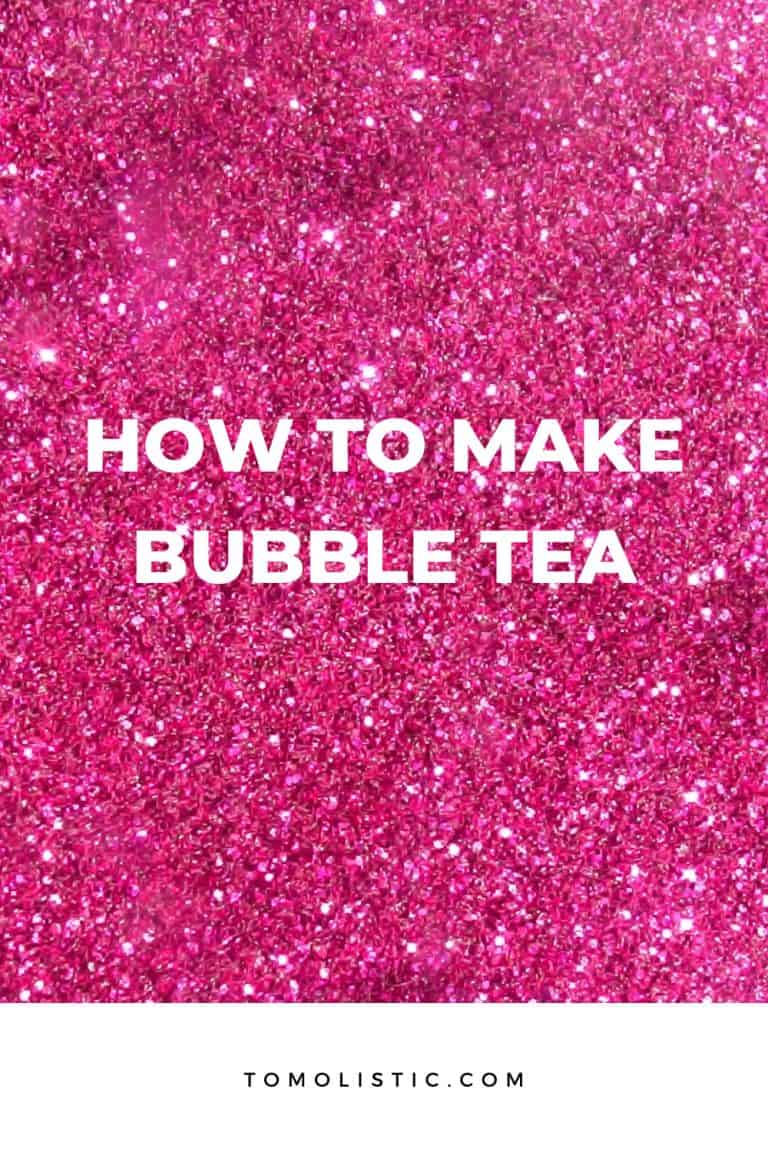Is Bubble Tea Considered Milk Tea?
Bubble tea, also known as milk tea, has been making waves in the beverage world. What is it about this trendy drink that has captivated the taste buds of so many? Let’s delve into the delightful world of bubble tea milk tea and unravel its appeal.
Bubble tea originates from Taiwan and has evolved into a global sensation. With its tantalizing combination of tea, milk, and chewy tapioca pearls, bubble tea offers a unique and satisfying drinking experience.
In this post, we will explore the origins of bubble tea, its various flavors and options, and why it has become a favorite among tea enthusiasts worldwide. Get ready to embark on a tasty journey as we uncover the secrets behind the popularity of bubble tea milk tea.
Understanding Bubble Tea
Bubble tea, also known as boba tea, is a trendy and refreshing beverage that has gained immense popularity worldwide. This section will delve into the origins of bubble tea, the key ingredients that make up this delightful drink, and the intriguing preparation process that brings it all together.
Origins of Bubble Tea
Bubble tea originated in Taiwan in the 1980s, created by adding chewy tapioca balls (boba) to traditional milk tea. Its name “bubble tea” comes from the frothy bubbles created by shaking the drink before serving. Originally a simple blend of black tea, milk, sugar, and tapioca pearls, bubble tea has evolved over the years to include a variety of flavors and toppings, catering to diverse taste preferences.
Ingredients in Bubble Tea
The basic ingredients of bubble tea include brewed tea, milk, sugar, and the iconic boba pearls made from cassava starch. Toppings like fruit jellies, popping boba, and aloe vera can be added for extra texture and flavor. Some variations may use green tea or fruit-infused teas as a base, offering a wide array of choices for tea enthusiasts.
Preparation Process of Bubble Tea
The preparation of bubble tea involves several steps to create the perfect blend of flavors and textures. Firstly, the tea base is brewed and allowed to cool. Then, milk and sugar are added to create a creamy and sweet mixture. Tapioca pearls are cooked separately until they reach the desired chewy consistency. Finally, the tea, milk, and pearls are combined, and the drink is shaken to create a frothy layer before being served with a wide straw to enjoy the boba pearls.
Bubble tea’s unique combination of flavors, textures, and customizable options have contributed to its widespread appeal among people of all ages. Whether you prefer a classic milk tea with boba pearls or a fruity tea with popping boba, there is a bubble tea variation to tantalize your taste buds and quench your thirst.
Difference Between Bubble Tea and Milk Tea
When it comes to tea-based beverages, it’s easy to get confused between bubble tea and milk tea due to their similarities in appearance. However, there are distinct differences between the two that set them apart.
Definition and Characteristics of Milk Tea
Milk tea is a traditional beverage that originated in Asia and has gained popularity worldwide. It is a simple yet satisfying drink made by combining brewed tea with milk. The tea used can vary, with popular options being black tea, green tea, or oolong tea. The milk provides a creamy texture and a subtle sweetness to the tea, creating a comforting and enjoyable drink.
Comparing Ingredients and Preparation of Bubble Tea and Milk Tea
Bubble tea, on the other hand, is a more modern take on tea that originated in Taiwan. It includes a base of tea, often black or green tea, mixed with milk or fruit flavors. What sets bubble tea apart are the addition of chewy tapioca pearls, also known as boba, which give the drink its unique texture and name.
In terms of preparation, while milk tea focuses on the harmony between brewed tea and milk, bubble tea incorporates additional elements like tapioca pearls and flavorings. Bubble tea is often shaken or blended to create a frothy and flavorful beverage, while milk tea is typically steeped like traditional tea and then mixed with milk.
Despite both beverages sharing a tea and milk component, the inclusion of tapioca pearls and the preparation methods differentiate bubble tea from milk tea, offering diverse options for tea enthusiasts looking to explore new and exciting flavors and textures.
Debunking the Myth: Is Bubble Tea Milk Tea?
Misconceptions often arise when it comes to the categorization of bubble tea – a popular beverage enjoyed worldwide. Let’s delve into the distinction between bubble tea and milk tea to unravel the myth and gain a better understanding of this beloved drink.
Clarifying the Misconception
Bubble tea is not the same as milk tea, although the terms are sometimes used interchangeably. While milk tea is a classic beverage made from tea and milk, bubble tea encompasses a broader spectrum of flavors and ingredients. The defining characteristic of bubble tea is the addition of chewy tapioca pearls or other toppings, creating a unique blend of textures that sets it apart from traditional milk tea.
Exploring the Categorization of Bubble Tea
Bubble tea falls under the category of tea-based beverages, but its versatility allows for endless variations. From fruit-flavored teas to creamy milk teas, bubble tea offers a diverse range of options to suit different taste preferences. While milk tea is a subset of bubble tea, not all bubble teas contain milk. The term “bubble” refers to the frothy bubbles that form when the drink is shaken or blended, adding a fun and playful element to the experience.
Understanding the Base of Bubble Tea
The base of bubble tea typically consists of brewed tea, milk (in the case of milk tea variations), sweeteners, and the signature toppings that give it its name. Different types of teas, such as black tea, green tea, or oolong tea, can serve as the foundation for bubble tea, each contributing its unique flavor profile to the final concoction. The tapioca pearls, also known as bubbles, are cooked to achieve a chewy consistency that pairs harmoniously with the smooth texture of the tea and milk mixture.
In conclusion, while bubble tea and milk tea share some similarities, they are distinct beverages with their own characteristics and flavor profiles. The next time you sip on a refreshing cup of bubble tea, remember the diverse elements that come together to create this beloved drink, making it a delightful treat for tea enthusiasts and newcomers alike.
Health Aspects of Bubble Tea
Bubble tea, a beloved beverage known for its unique flavors and chewy tapioca pearls, has gained immense popularity. However, it’s essential to understand the health aspects associated with consuming bubble tea regularly. Let’s delve into the nutritional value of bubble tea, the impact of its ingredients on health, and compare its health benefits with traditional milk tea.
Nutritional Value of Bubble Tea
When it comes to the nutritional value of bubble tea, it’s crucial to consider that it varies based on the ingredients and preparation methods. Typically, bubble tea is made with tea, milk, sugar, and toppings such as tapioca pearls or fruit jellies. While tea provides antioxidants and can be a healthy choice, the addition of sugar and dairy can increase the calorie and sugar content significantly. It’s essential to be mindful of the portion size and opt for lower sugar and dairy-free alternatives when possible.
Impact of Bubble Tea Ingredients on Health
Bubble tea ingredients can have both positive and negative impacts on health. The tea base in bubble tea can provide antioxidants and promote overall well-being. However, excessive sugar consumption from bubble tea can contribute to weight gain and increase the risk of developing conditions like diabetes and heart disease. Tapioca pearls, a signature element of bubble tea, are high in carbohydrates and calories, which should be considered when consuming this beverage regularly.
Comparing Health Benefits between Bubble Tea and Milk Tea
When comparing the health benefits of bubble tea and traditional milk tea, it’s essential to note that both beverages can have health implications based on their ingredients. While milk tea offers the benefits of calcium and protein from the dairy content, bubble tea can provide antioxidants from the tea base. However, the added sugar in both beverages can outweigh these benefits, leading to potential health risks if consumed in excess. Choosing unsweetened or less sweet options and being mindful of portion sizes can help enjoy these beverages in a healthier way.
Popularity and Variations
Bubble tea has taken the world by storm, becoming a global craze that has captured the taste buds of people across continents. This unique and fun beverage has garnered a massive following, with dedicated bubble tea shops popping up in cities worldwide.
Global Craze for Bubble Tea
The popularity of bubble tea knows no bounds, with enthusiasts of all ages flocking to bubble tea shops to indulge in this delightful drink. Originating in Taiwan in the 1980s, bubble tea has since spread like wildfire, gaining a loyal fan base in countries such as the United States, Canada, Australia, and many more. Its appeal lies in its intriguing combination of flavors, textures, and the element of surprise brought by the chewy tapioca pearls or bursting boba balls.
Diverse Flavors and Additions in Bubble Tea
One of the most exciting aspects of bubble tea is the sheer variety of flavors and add-ons available to customize your drink. From classic options like black milk tea and green tea to more adventurous choices like taro, honeydew, or even avocado, there is a flavor to suit every palate. Add in toppings like tapioca pearls, fruit jelly, aloe vera, or popping boba, and the possibilities are endless. This diversity allows bubble tea lovers to experiment and find their perfect blend of flavors and textures.
Trend of Milk Tea in Different Cultures
Milk tea, a close cousin of bubble tea, has a rich and diverse history in various cultures around the world. While bubble tea incorporates the signature tapioca pearls or boba, milk tea offers a more straightforward yet equally delicious experience. In Asian countries like China, Taiwan, and Japan, milk tea is a beloved beverage that can be enjoyed hot or cold, with variations ranging from creamy and sweet to strong and robust. In Western countries, milk tea has also gained popularity, with cafes and tea shops offering their unique twists on this comforting drink. The trend of milk tea continues to evolve, blending traditional recipes with modern flavors to appeal to a global audience.
Conclusion
In conclusion, while bubble tea and milk tea share some similarities in terms of ingredients, preparation, and popularity, they are distinct beverages with unique characteristics. Bubble tea typically includes chewy tapioca pearls or other toppings, while milk tea focuses on the rich combination of tea and milk. Both beverages have their loyal followings, offering a delightful and refreshing experience to tea enthusiasts worldwide.
Whether you find yourself craving the fun and chewy textures of bubble tea or the creamy indulgence of milk tea, the key is to enjoy these beverages in moderation and savor the variety they bring to your taste buds. So, the next time you’re pondering over whether bubble tea qualifies as milk tea, remember that both have their place in the diverse landscape of tea-based drinks, ready to tantalize your palate in their own unique ways.

